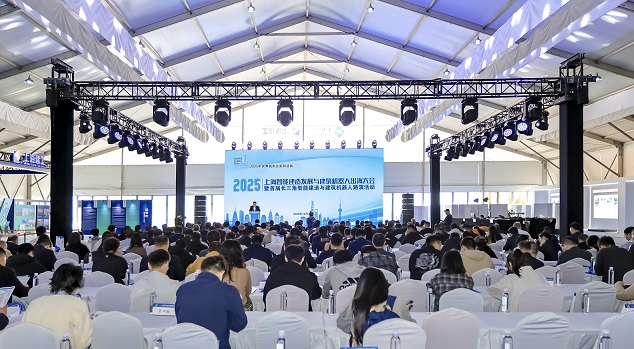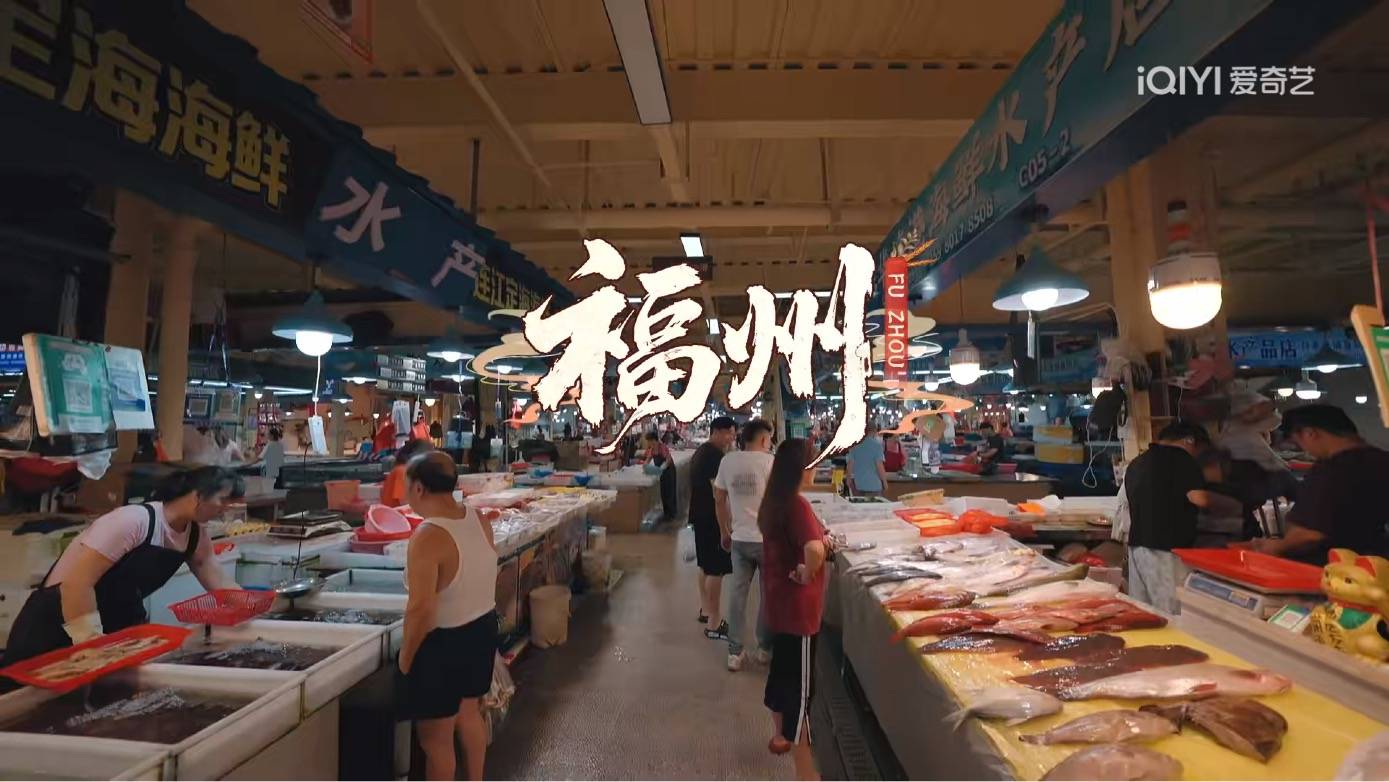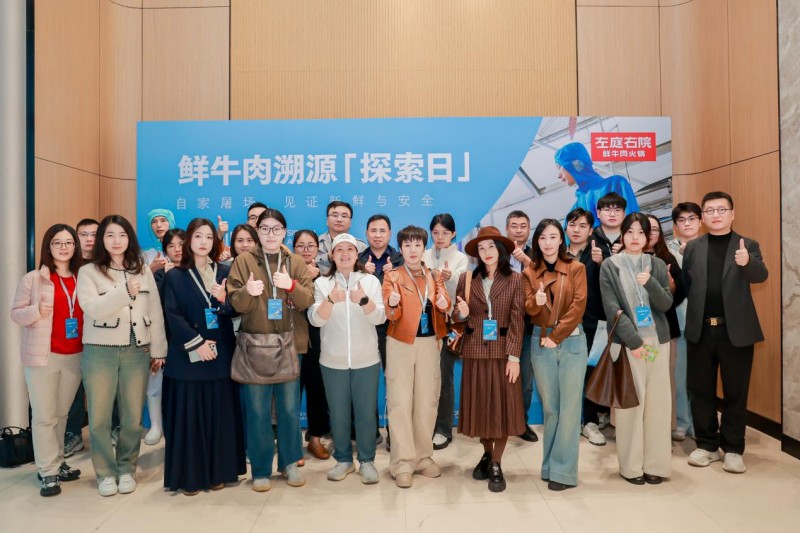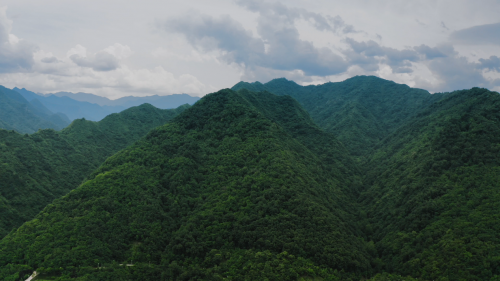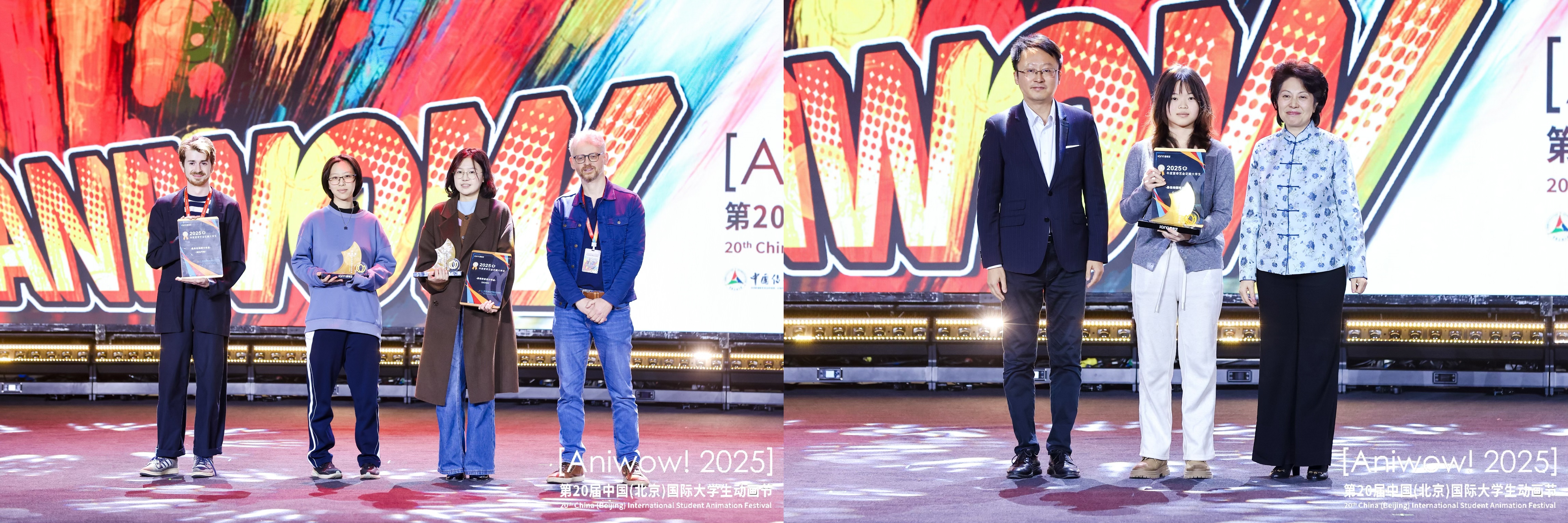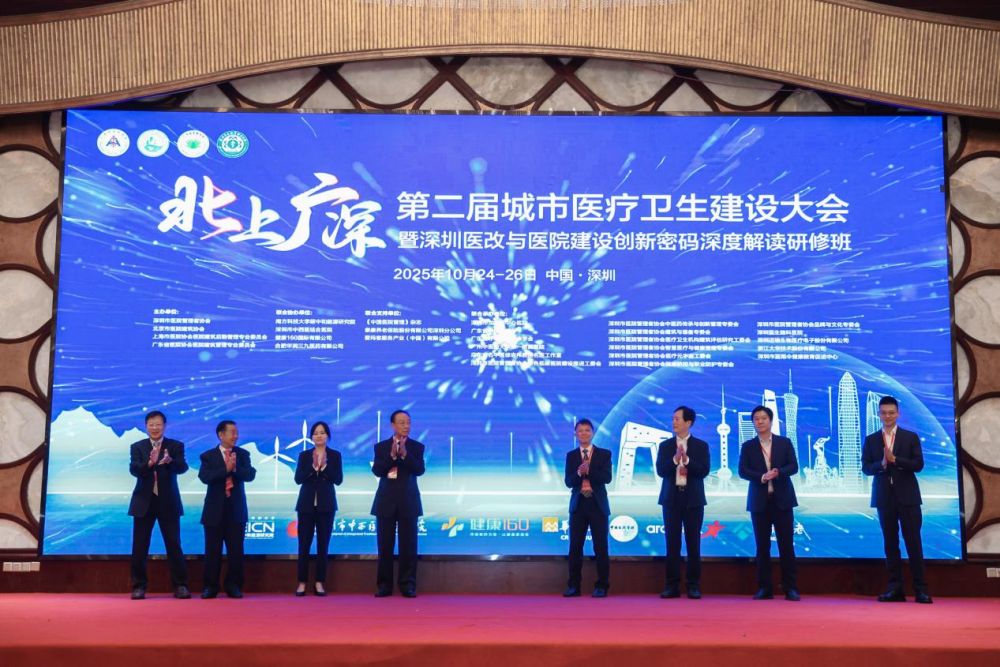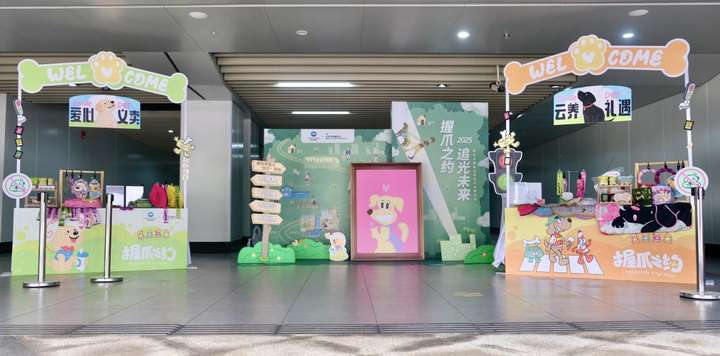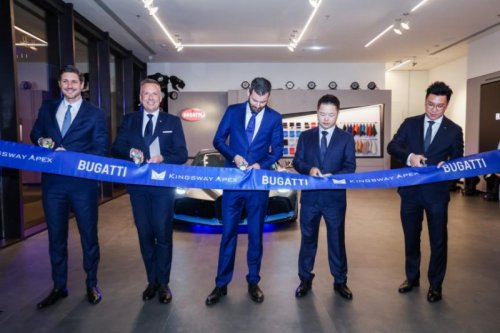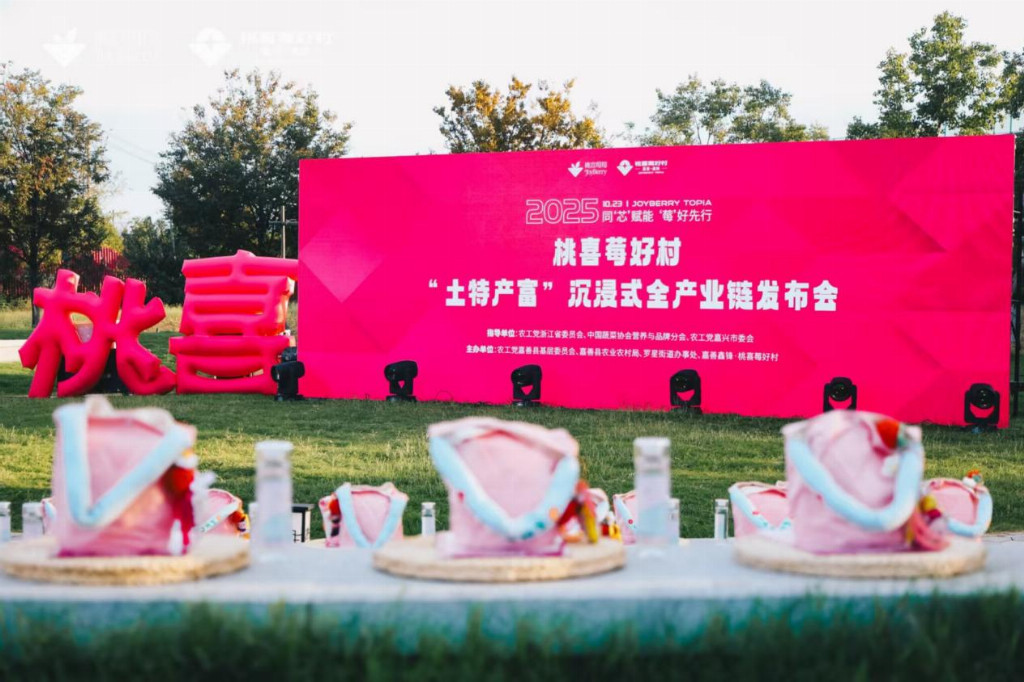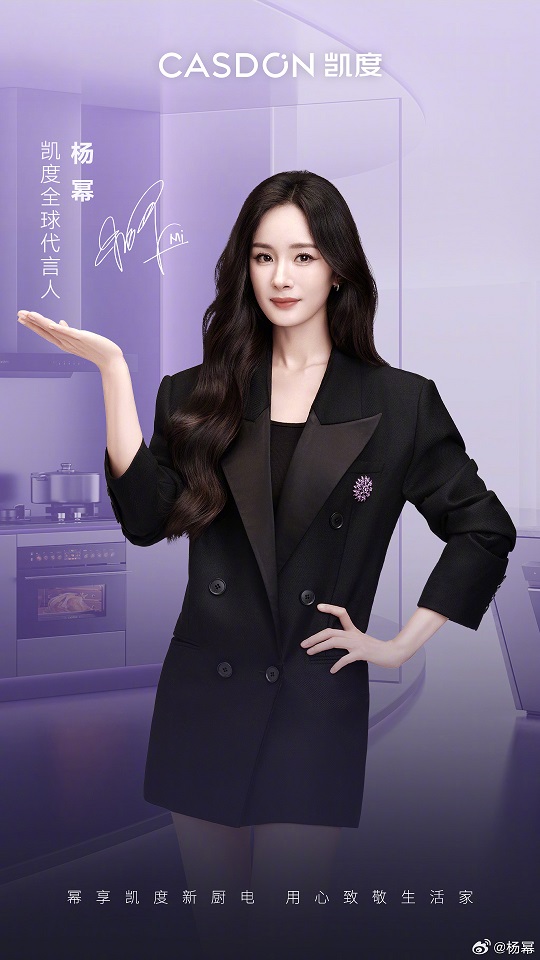刘士铭美术馆荣幸呈现展览《痕迹》(Traces),展出艺术家刘士铭与张里特的作品——两位来自不同世代的艺术家因共同的探索而相遇:如何用艺术来捕捉人类存在的脆弱、延续与转化。
两位艺术家都将“身体”置于创作的核心,但并非英雄化或纪念碑式的身体,而是被时间、动作与材质穿行的“生活的身体”。在刘士铭的作品中,身体成为承载普世人性的容器。他的创作深深扎根于日常生活。离开北京前往乡村后,他沉浸于农村生活,细致观察人们的日常。每件雕塑都成为具象的叙事:身体既是观察者,也是参与者,游走于个人经验与集体记忆之间。展览中的胸像与修长的人体造型,以朴素的形式追寻内在的真实。作品上可见的手痕与粗粝的塑形,皆是生命的印迹。
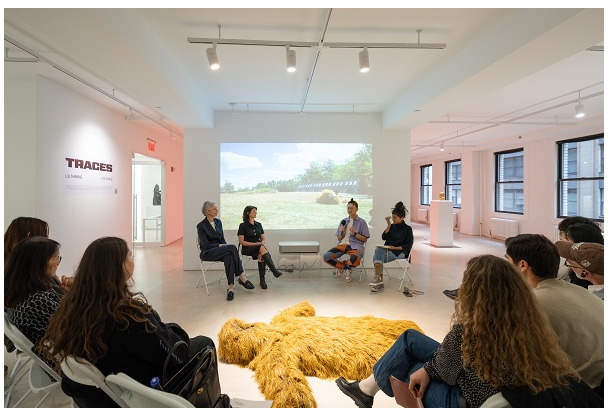
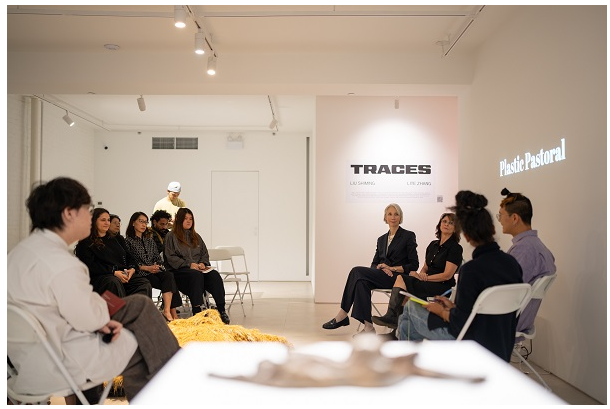
张里特则将身体表现为“通道”与“转化之所”。他从中国迁居美国的经历,使他对身体与空间的感知不断变换。他的实践跨越雕塑、行为与装置的边界,探讨材料、个体与记忆的流动。通过运用自然与工业材料——常常被改造或挪用——身体成为“连根拔起”与“重构”的隐喻。即便身体不在场,也留下痕迹:这些装置成为敏感的地景,见证着文化与地域间持续的流动与迁徙。
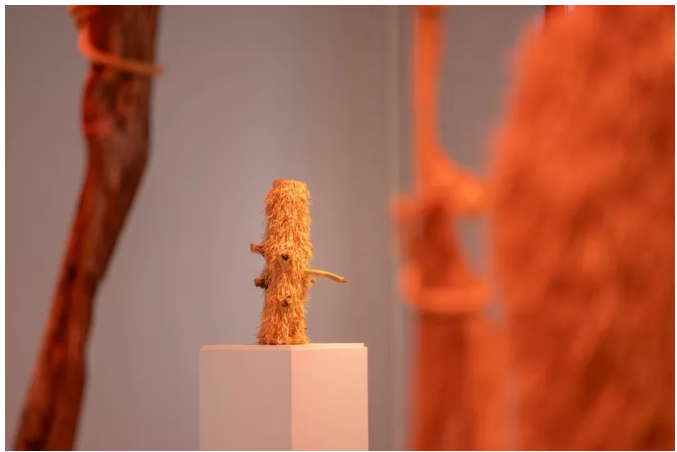
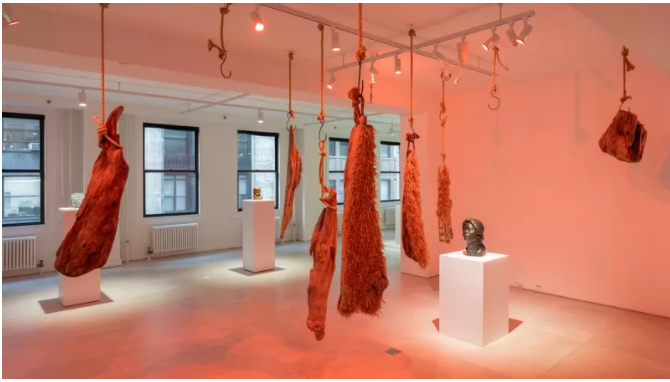
在展览的第一间展厅中,张里特的作品《同根生》(Same Roots)以漂流木构成,在鲜红的光线中浮现出一种既不稳定又冥想的景象。光线在威胁与庇护、紧张与平静之间摇曳,映照出人类联系的脆弱与流动的悖论。面对这一装置,刘士铭的静默胸像似乎凝视着这变化的世界——他们的静止,与张里特漂浮的形态形成镜像,仿佛刘的雕像在注视物质与精神的时空转化。
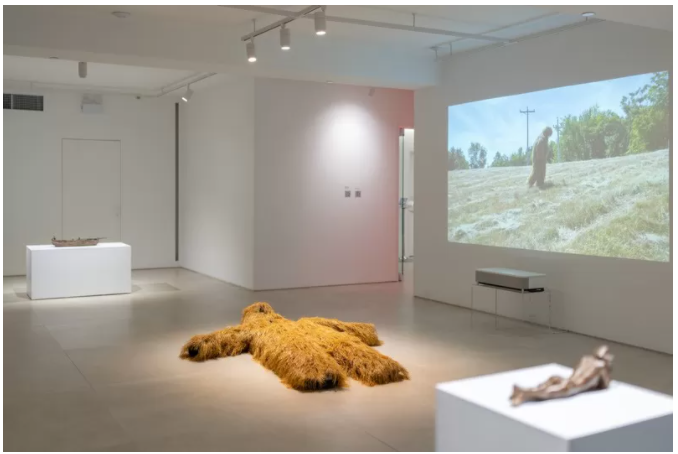
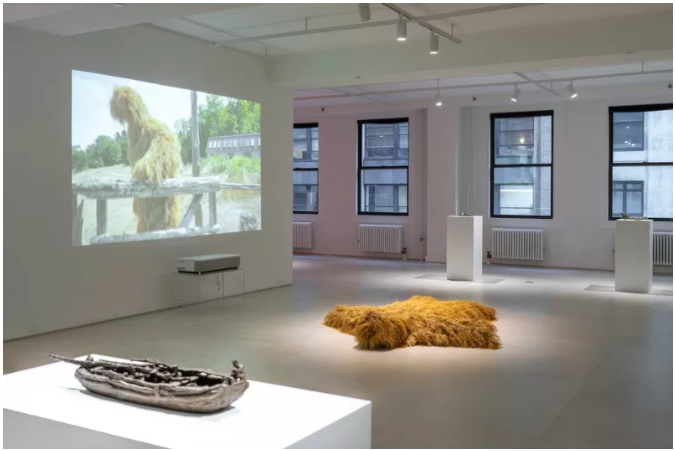
第二间展厅展出张里特的装置《塑料田园诗》(Plastic Pastoral):由人造干草制成的服装平铺于地面,旁边播放着他于2025年夏天在缅因州斯科希根绘画与雕塑学院(Skowhegan School of Painting and Sculpture)驻留期间拍摄的视频。身体虽然缺席,却仍留有其印迹。服装的物理存在与影像中身体的动作,与刘士铭的卧姿雕塑互相呼应,共同唤醒一种跨越时空的“动作记忆”。无论是真实的还是象征性的,身体在两位艺术家的作品中持续流动,被材料与影像记录、传递,映照着他们各自的迁徙与蜕变。
这种对话揭示了跨世代的“动作延续”。一位在材料中塑形,另一位在空间中重组——无声的传递中,形式互为回应与再造。身体与动作的流动成为记忆的隐喻,是穿越时间与空间的连续之流。
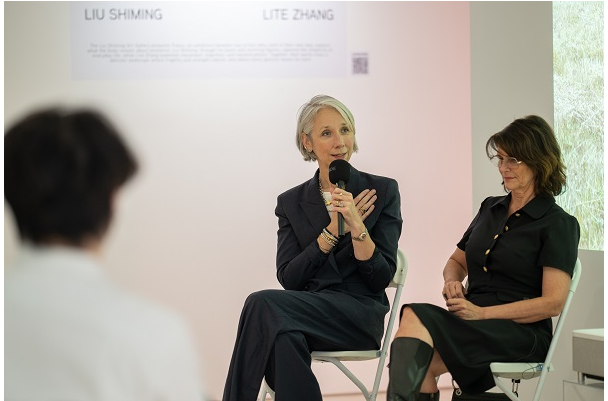
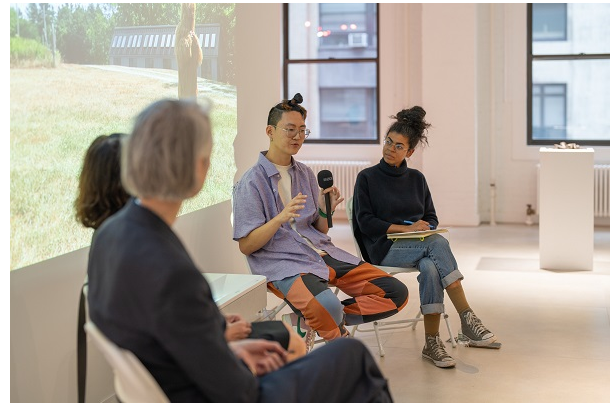
2025年10月,刘士铭艺术基金会举办的一场对谈中,马里兰艺术学院(Maryland Institute College of Art)莱因哈特雕塑学院硕士项目主任多洛雷斯·齐尼(Dolores Zinny)提及这种“循环的艺术思维”——随时间推移,思想与经验的汇合并非在形式上,而在方法上。艺术史中不断被探讨的主题,与过往的物质经验相互共振。媒介在变化,话语在调整,但艺术的意图始终延续。某种意义上,艺术本身即是循环的——其呈现与解读在演变,而力量恒久不衰。
因此,《痕迹》不仅仅是两种创作实践的并置,而是揭示了一种鲜活的“呼应循环”。刘士铭与张里特共同敏感于“脆弱”“流动”与“悬停的片刻”。他们的作品凝视那些延续、消逝与转化的瞬间。通过身体——无论是具象的还是象征的——的迁移与错位,他们见证了生命与艺术姿态的流动与柔韧。
展览邀请观者思考我们与他人、与物质、与时间、与自然的关联。雕塑、装置与影像在此化为痕迹——人性的碎片、动作的印记、自我反省的片刻,以及正在生成的记忆。它们揭示了贯穿万物的流动、迁徙与变动之力。
——2025年10月
马埃尔·埃贝勒(Maëlle Ebelle)
Exhibition Overview
The Liu Shiming Art Gallery is pleased to present the exhibition Traces, bringing together the work of Liu Shiming and Lite Zhang: two artists from different generations who share a desire to understand how art can capture both the fragility and the strength of human existence.
For them, the body lies at the center of their practice, not as a heroic or idealized representation, but as a site of passage, experience, and transformation. Liu Shiming’s busts and reclining figures, with their simple and sensitive forms, embody a universal humanity rooted in everyday life. They bear the traces of the sculptural gesture, but also of life itself: a face, a moment of rest, a vulnerability.
Lite Zhang, on the other hand, explores the body through displacement, migration, and the transformation of materials. His works, at the crossroads of installation, performance, and sculpture, inscribe within space unstable presences, oscillating between grounding and drifting. The shared sensibility seeks to make visible fragile instants, ordinary lives, and inner landscapes, while also questioning the movements of bodies, their perception, and their impact on what endures and what undergoes metamorphosis.
Through this encounter, Traces invites us to contemplate what connects us to others, to nature, and to the world: fleeting marks, suspended fragments, imprints that speak of both permanence and passage.
Artists:
Liu Shiming
Liu Shiming (1926-2010) studied at the Central Academy of Fine Arts in Beijing. In his works, he skillfully blended Chinese tradition with European modernist influences. Deeply rooted in the everyday life and cultural heritage, Liu Shiming is recognized as a visionary figure with a very distinct humanist style. Exhibited worldwide, his legacy continues through the Liu Shiming Sculpture Museum in Beijing and the Liu Shiming Art Foundation in New York.
Lite Zhang
Lite Zhang (b. 1998, China) is a New York and Baltimore based artist who is interested in space and audience interaction. He received an MFA degree in Rinehart School of Sculpture at Maryland Institute College of Art (MICA) in spring 2024 and is an alumnus of the Skowhegan School of Painting & Sculpture (Class of 2025).
Zhang's installations engage different senses, including auditory, tactile, and immersive components, while exploring the infinite possibilities of materials, found objects to reflect social phenomena. He has shown in New York, Los Angeles, Washington DC, Rockville, and Baltimore, Maryland, including cutting-edge galleries like Liu Shiming Art Gallery, PS122 Gallery, Current Space, AREA 405, and VisArts.
“Space and audience interaction are important to me. I love converting existing objects and topics into my unique vision. Through my research and contemplation of reflecting on objects, I strive to provide my audience with a completely sensory experience. I treat space as a creative material and architecture as an empty canvas, thereby inviting the viewer to become part of the artwork.
Intervening in the stage of perception is the most direct way for me to create a dialogue with the audience, to regenerate a surreal fantasy by changing or replacing the original perception and thinking. Cognition refers to understanding the world through perception, thinking, memory, and logical reasoning. I believe that human cognitive ability begins with perception, which leads to acquiring knowledge and insights.
I reimagined a lot of traditional Chinese folk art and expressed it humorously and nonsensically. My passion lies in delving into the infinite potential of everyday materials, including discarded objects, to convey my reflections on different social phenomena through various forms and properties.”
Time & Location
Liu Shiming Art Gallery. 15 E 40th St., 5th Floor
New York, NY 10016
OCT 7 – 31, 2025. Open Monday–Friday 11AM–5PM
Public Events
Oct.10, 4-6PM Panel with
Director of Rinehart School of Sculpture MFA at MICA: Dolores Zinny
Artists: Alexandra Grant, Lite Zhang.
Exhibition Text
Liu Shiming Art Gallery is pleased to present Traces, an exhibition bringing together the works of Liu Shiming and Lite Zhang, two artists from different generations but united by the same quest: to understand how art can capture the fragility, continuity, and transformation of human existence.
Both place the body at the center of their artistic inquiry, not as a heroic, idealized, or monumental form, but as a lived body, traversed by time, gesture, and material. In Liu Shiming’s work, the body becomes the vessel of a universal humanity. His busts and elongated figures, imbued with essential simplicity, strive toward an inner truth. His sculptures intentionally reveal the marks of the hand and the textures of modeling, serving as traces of life. Each work testifies to a profound connection between the sculptor and the material he shapes.
Lite Zhang, on the other hand, explores the notion of the body as a site of passage and metamorphosis. His practice, at the crossroads of sculpture, performance, and installation, examines movement of materials, individuals, and memories. Through the use of organic and industrial materials, often altered or displaced, he constructs a visual vocabulary in which the body becomes a metaphor for uprooting and reconstruction.
In Same Roots, presented in the first exhibition room, the artist stages driftwood bathed in vibrant red light, creating a landscape that is both precarious and meditative. This light, simultaneously threatening and nurturing, oscillates between alertness and calm, evoking the constant tension between loss and belonging, separation and connection. Facing this work, Liu Shiming’s silent busts seem to contemplate the movement of the world. Their faces embody a form of permanence at the heart of flux. Their stillness mirrors Zhang’s drifting forms, as if Liu’s figures were observing the transformations of matter and spirit over time. They are static witnesses to a perpetually evolving inquiry.
In the second room, Lite Zhang’s installation Plastic Pastoral (a costume on the floor made of artificial hay, accompanied by a video shot in Maine during an artist residency in the summer of 2025) extends this reflection. The body is absent, but its imprint remains: the physical presence of the costume in space as a vestige of performance, the gestures captured on video, and the breath of the surrounding landscape. These elements echo Liu Shiming’s reclining bodies, reactivating a form of gestural memory shared between the two artists.
This dialogue reveals the continuity of gestures across generations. What one artist shapes in material, the other reformulates in space, like a silent transmission in which forms respond to and reinvent each other.
For that reason, Traces does more than juxtapose two practices: it illuminates a living cycle of correspondences. Liu Shiming and Lite Zhang share a sensitivity to vulnerability, movement, and suspended moments. Their works reflect a profound attention to what endures, what fades, and what transforms.
Through this encounter, the exhibition invites contemplation of what connects us to others, to matter, to time, and to nature. Sculptures, installations, and videos become traces: fragments of humanity, imprints of gesture, reflections on our own conditions, memories in the making.
Maëlle Ebelle
展览简介
刘士铭艺术画廊荣幸呈现展览《痕迹(Traces)》,展出刘士铭与张里特两位艺术家的作品。两人虽来自不同的时代,却共享同一种追求——探讨艺术如何捕捉人类存在的脆弱与坚韧。
对于两位艺术家而言,身体是他们创作的核心:不是英雄化或理想化的象征,而是一个承载经验、流动与转化的场域。刘士铭的雕塑——无论是头像还是卧姿人物——以简洁而细腻的造型呈现出深厚的人文关怀。他的作品既保留了雕塑的手工痕迹,也承载着生命的温度:一张面孔、一段歇息、一次脆弱的显露。
相比之下,张里特通过“位移”“迁徙”与“材料转化”探索身体的存在。他的作品横跨装置、表演与雕塑,在空间中构建出介于“扎根”与“漂移”之间的不稳定存在。两位艺术家共享的感性在于,让那些稍纵即逝的瞬间、普通的生命与内在的风景得以显现,并思考身体的运动、感知与它们对“延续”与“变形”的影响。
通过这场相遇,《痕迹》邀请观众思考:是什么将我们与他人、与自然、与世界相连?那些短暂的印记、悬置的片段与生命的痕迹,同时诉说着永恒与流逝。
艺术家介绍
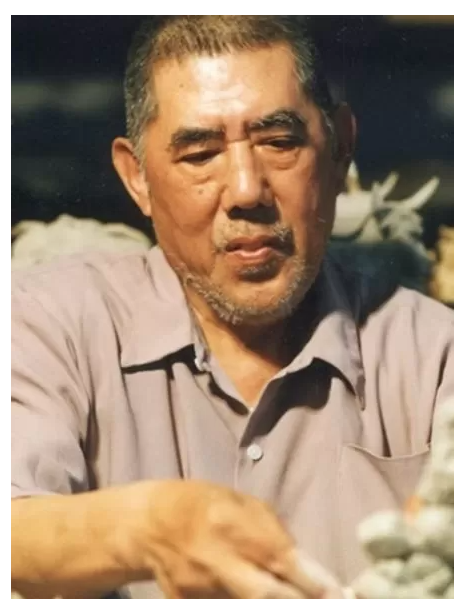
刘士铭
刘士铭(1926–2010)毕业于北京中央美术学院。他在作品中巧妙地融合了中国传统与欧洲现代主义的影响。扎根于日常生活与文化传统之中,刘士铭以其独特的人文风格成为中国现代雕塑的重要代表人物。他的作品曾在世界各地展出,其艺术遗产由北京刘士铭雕塑博物馆与纽约刘士铭艺术基金会延续。
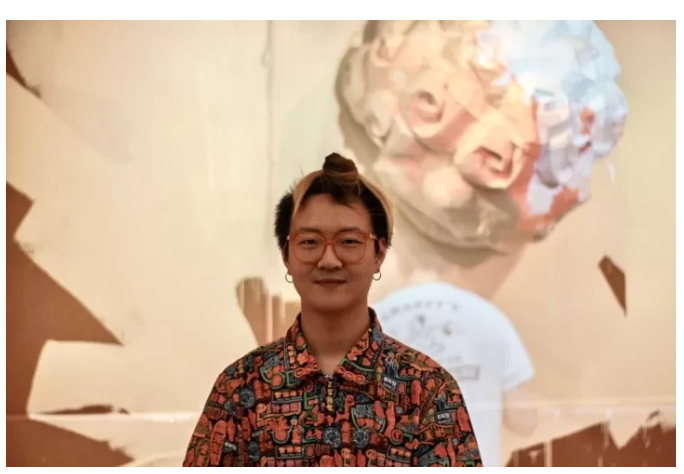
张里特
张里特(Lite Zhang),1998年出生于中国,现工作与生活于纽约与巴尔的摩。他于2024年春季获得马里兰艺术学院(Maryland Institute College of Art)莱因哈特雕塑学院(Rinehart School of Sculpture)艺术硕士学位,并于2025年完成斯科希根绘画与雕塑学院(Skowhegan School of Painting & Sculpture)驻留项目。
张里特的装置作品融合听觉、触觉与沉浸式体验,探索材料与现成物的无限可能,以此映照社会现象。他的作品曾在纽约、洛杉矶、华盛顿特区、罗克维尔与巴尔的摩等地展出,合作机构包括刘士铭艺术画廊、PS122 Gallery、Current Space、AREA 405与VisArts等当代艺术空间。
展出作品
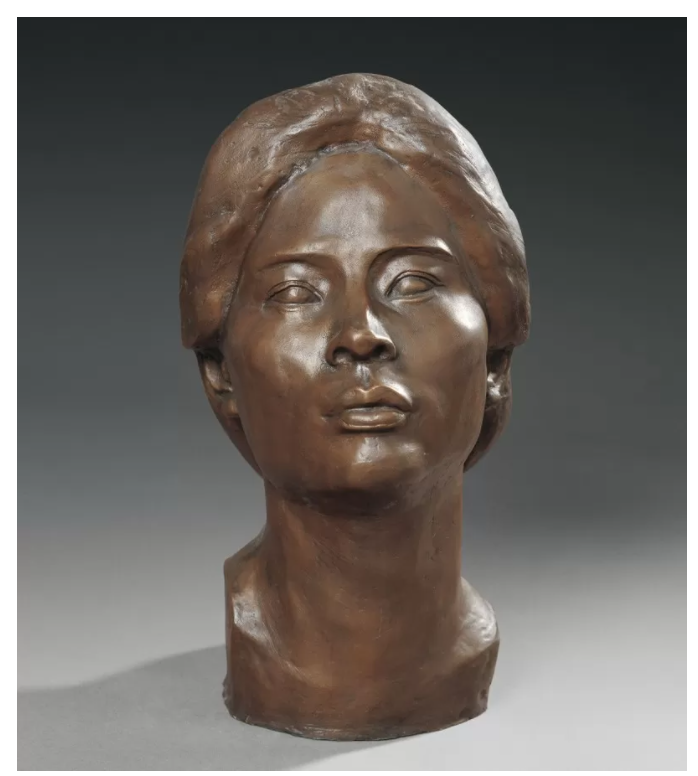
1. 刘士铭
《女子头像》
1993年
青铜,39 × 20.5 × 27 厘米
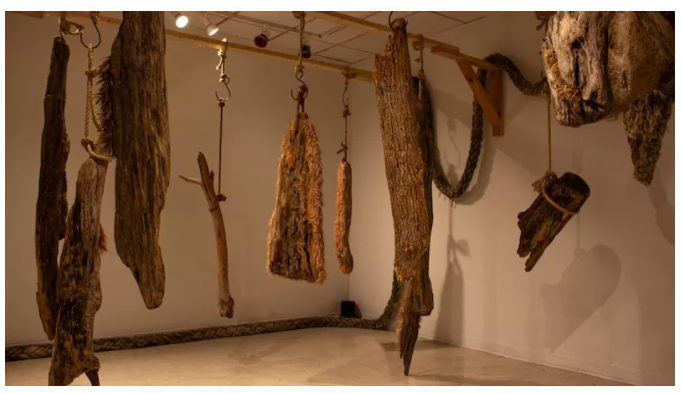
2.张里特
《同根(Same Roots)》
2023年
漂流木、建筑木材、牛皮纸、金属、麻绳、舞台灯
声音设计:吕宜真
作品说明:
《同根》以“漂流木”为核心,探讨身份、迁徙与自然转化的主题。作品灵感来自艺术家从西安到巴尔的摩的旅程:站在异乡的海岸,望着散落的漂流木——它们被海浪侵蚀,却各自承载着独特的故事,如同艺术家在异地生根的不确定感。
作品中的每根漂流木都被覆盖上“纸皮毛”,形成立于灯光下的“毛树”。在普通灯光下,它们象征重生与坚韧;而当红色光线笼罩时,则散发出令人不安的气息,仿佛囚禁与牺牲的象征。红光让人联想到屠宰场的灯光,提醒我们:有些树在成长前就被砍伐,为人类所用。悬挂的铁钩强化了这种张力——生命在外力面前的脆弱。
《同根》通过这种对比,将个人经验与生态议题相连。漂流木既是生存的见证,也是被利用的象征;它连接了艺术家自我迁徙的经验与人类对自然的复杂关系。观众在观看中被邀请思考:坚韧与脆弱、转化与失落、个体与环境之间的微妙平衡。
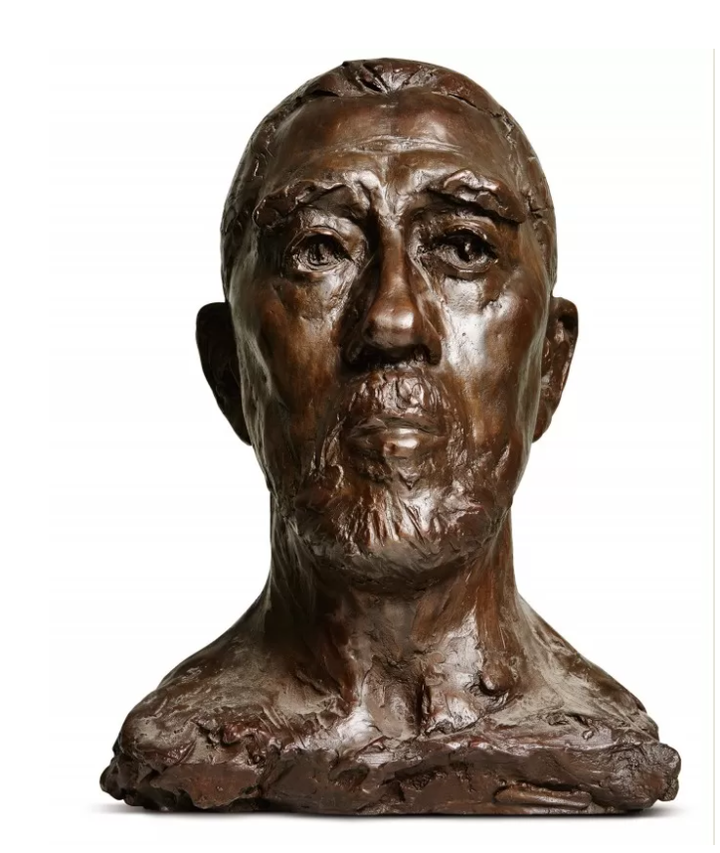
3. 王少军
《刘士铭肖像》
2006年
青铜,41.5 × 31 × 26.5 厘米
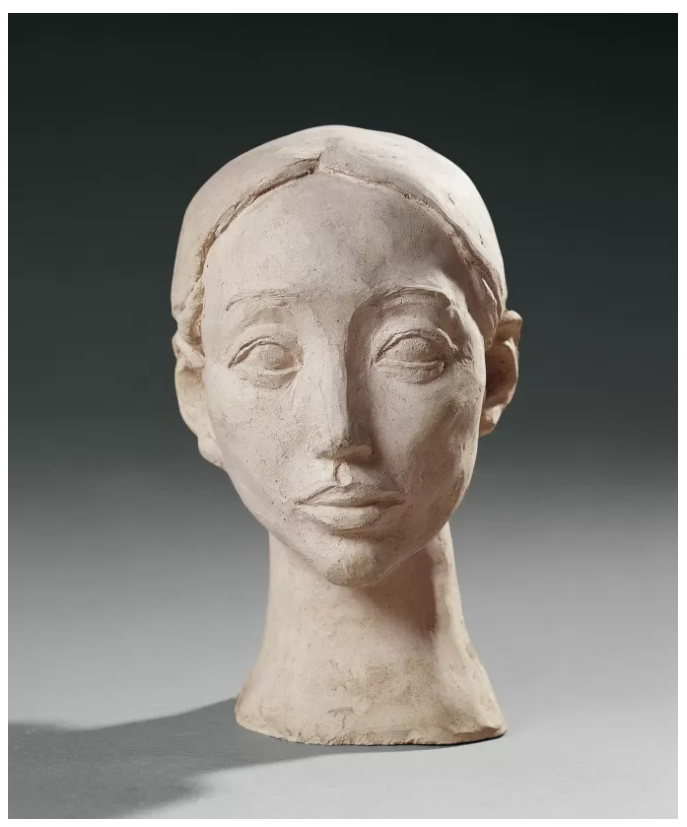
4. 刘士铭
《女子头像5》
1995年
青铜,11 × 15 × 19 厘米
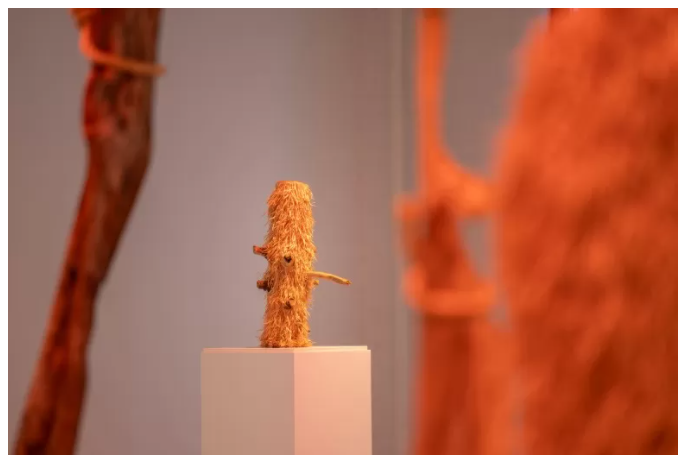
5. 张里特
《同根(Same Roots)》
2023年
漂流木、建筑木材、牛皮纸、金属、大麻绳、舞台灯、声音
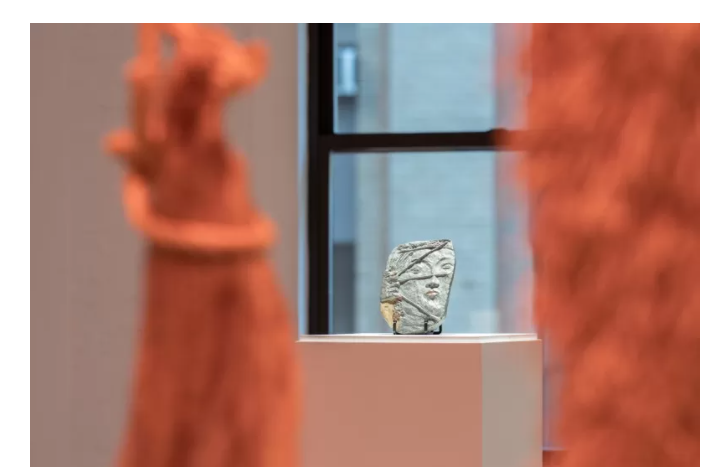
6. 刘士铭
《女性面部浮雕》
青铜,15.8 × 2.3 × 22.4 厘米
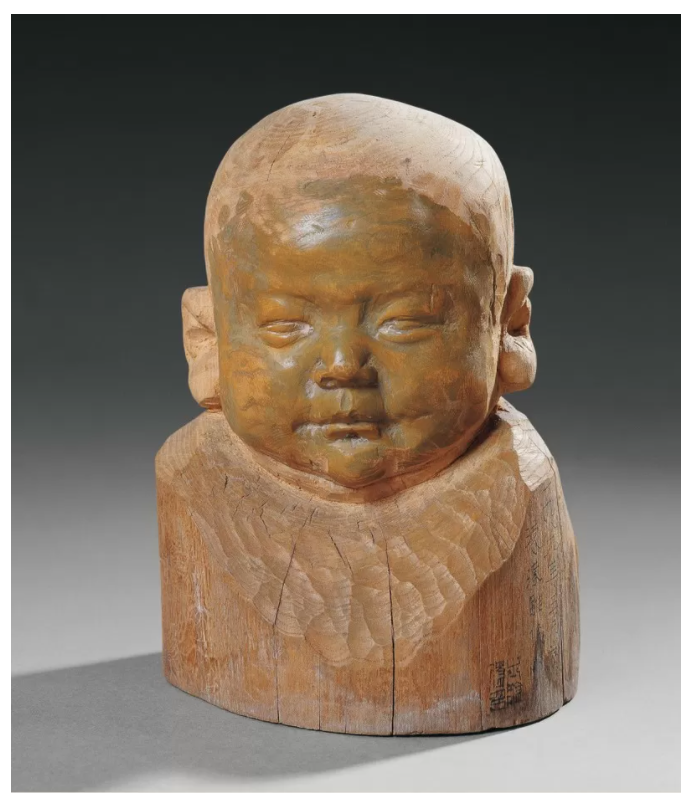
7. 刘士铭
《萌萌(儿童)》
1989年
青铜,24 × 17 × 15 厘米
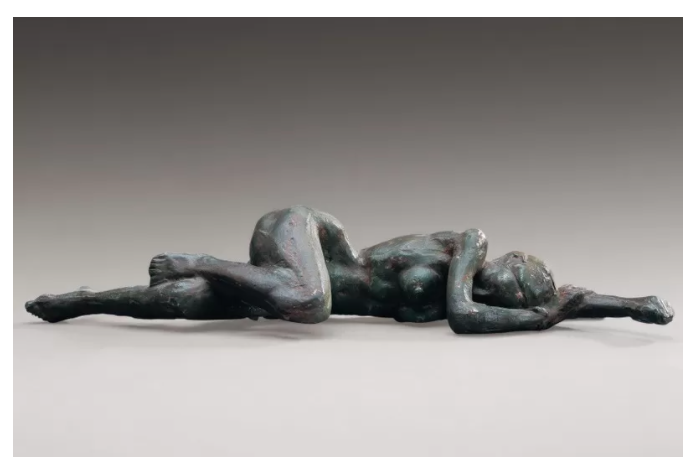
8. 刘士铭
《卧姿女模特》
1989年
青铜,5.8 × 32 × 10 厘米
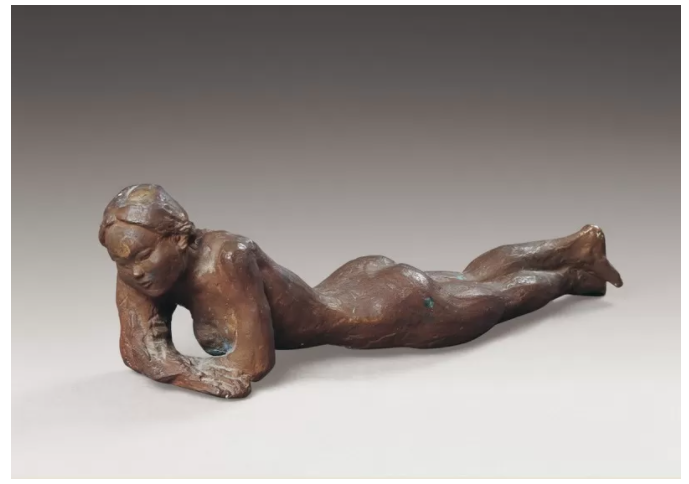
9. 刘士铭
《女子卧像》
1983年
青铜,10 × 34 × 7.5 厘米
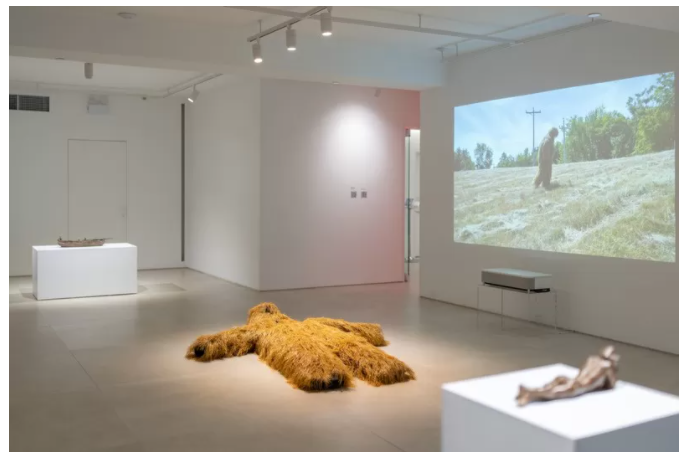
10–11. 张里特
《塑料田园(Plastic Pastoral)》
2025年
人造干草、影像
作品说明:
这件作品源自我对“自然与人工”之间微妙关系的思考。我用黄色人造草皮制作了一整套“干草装”,并在真实的干草地上滚动拍摄。远处看,我的身体几乎与地景融为一体;但当动作显现时,又暴露出异样的存在——一种尴尬的混合体,介于伪装与显露之间。
这套“服装”并非单纯的道具,而是一层由石油纤维制成的“第二层皮肤”——对自然的塑料化讽喻。我希望在真实与制造之间制造碰撞,揭示两者边界的脆弱性。这个身体既非人类,也非自然,而是一种奇异的结合体——部分稻草人、部分怪物、部分合成幻影。
我在地面上翻滚的动作拒绝了“耕作”或“收获”的逻辑——那曾是人类与土地关系的基础。相反,这种无目的、笨拙又孩童般的动作,揭示了“回归自然”在塑料时代的荒谬。
《塑料田园》质问一个问题:当人类以人造材料重构“田园理想”时,会发生什么?它反映了我们时代的悖论——我们不断模拟自然,却在过程中侵蚀自然本身。当我披上人造草皮,我既隐形又突兀,既是田野的一部分,又是它的入侵者。
在这种紧张中,我看到了当代田园的样貌——一个不再青翠丰盈,而是塑料化、脆弱又疏离的世界。
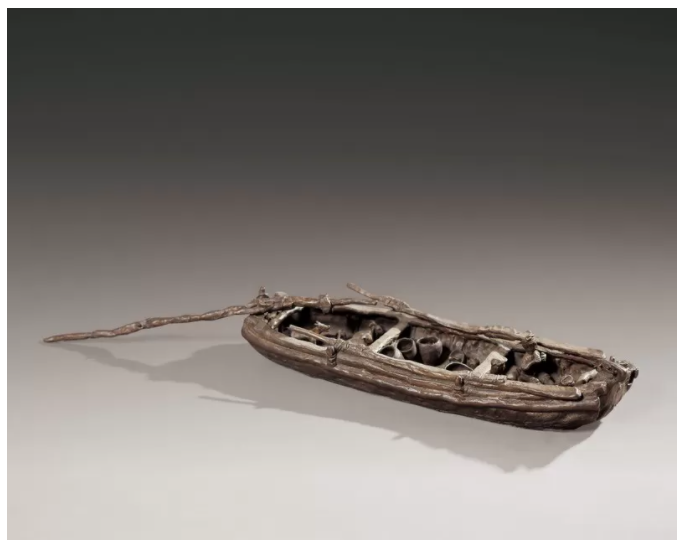
12. 刘士铭
《黄河船夫》
1990年
青铜,14.5 × 60 × 20 厘米
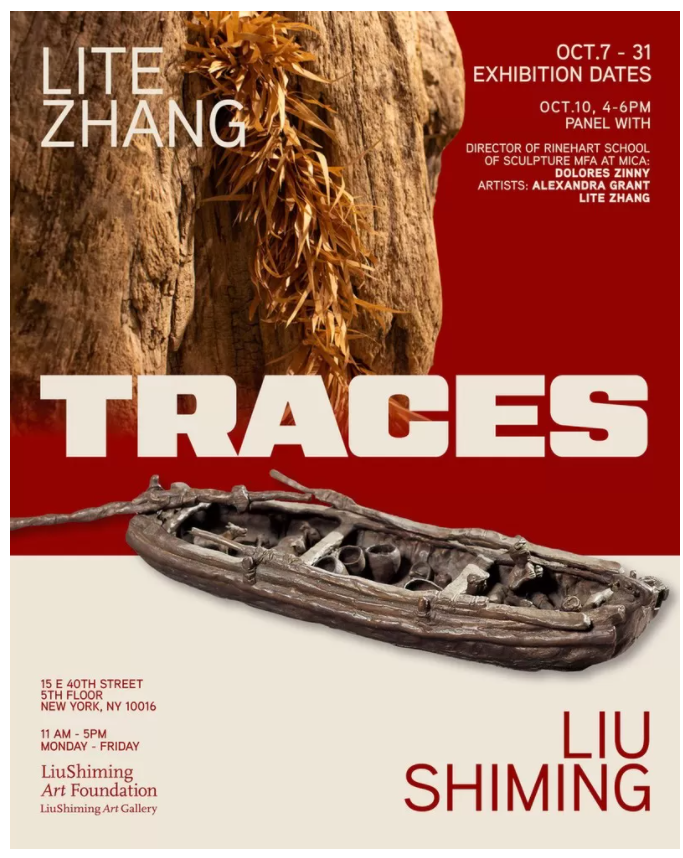
展览信息
地点
刘士铭艺术画廊
纽约市东40街15号 五楼
New York, NY 10016
开放时间
周一至周五 上午11点 – 下午5点
公共活动
10月10日 下午4点至6点
专题座谈:
马里兰艺术学院莱因哈特雕塑硕士项目主任 Dolores Zinny
艺术家:Alexandra Grant、张里特
图自© 刘士铭艺术基金会
© 张里特
免责声明:市场有风险,选择需谨慎!此文仅供参考,不作买卖依据。

